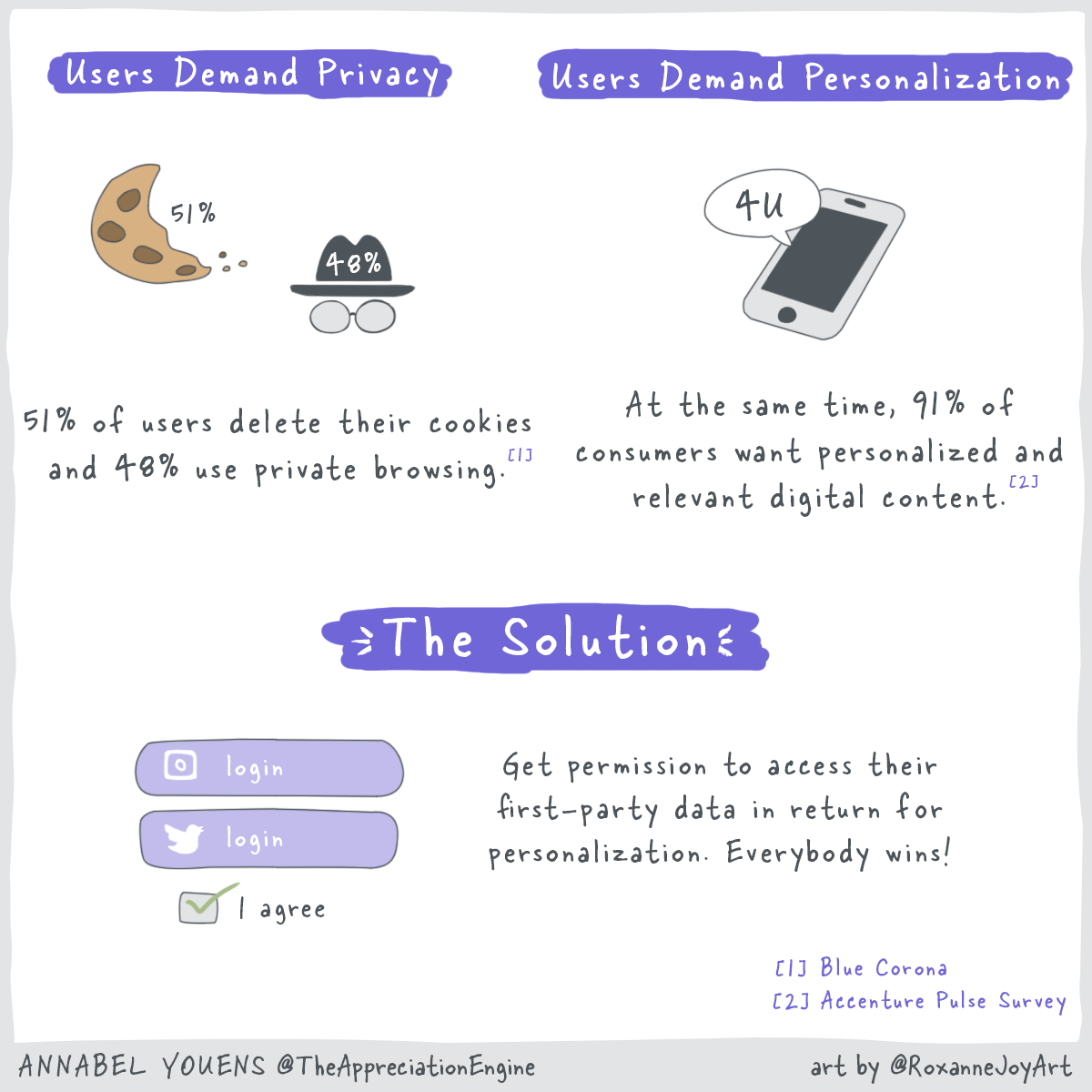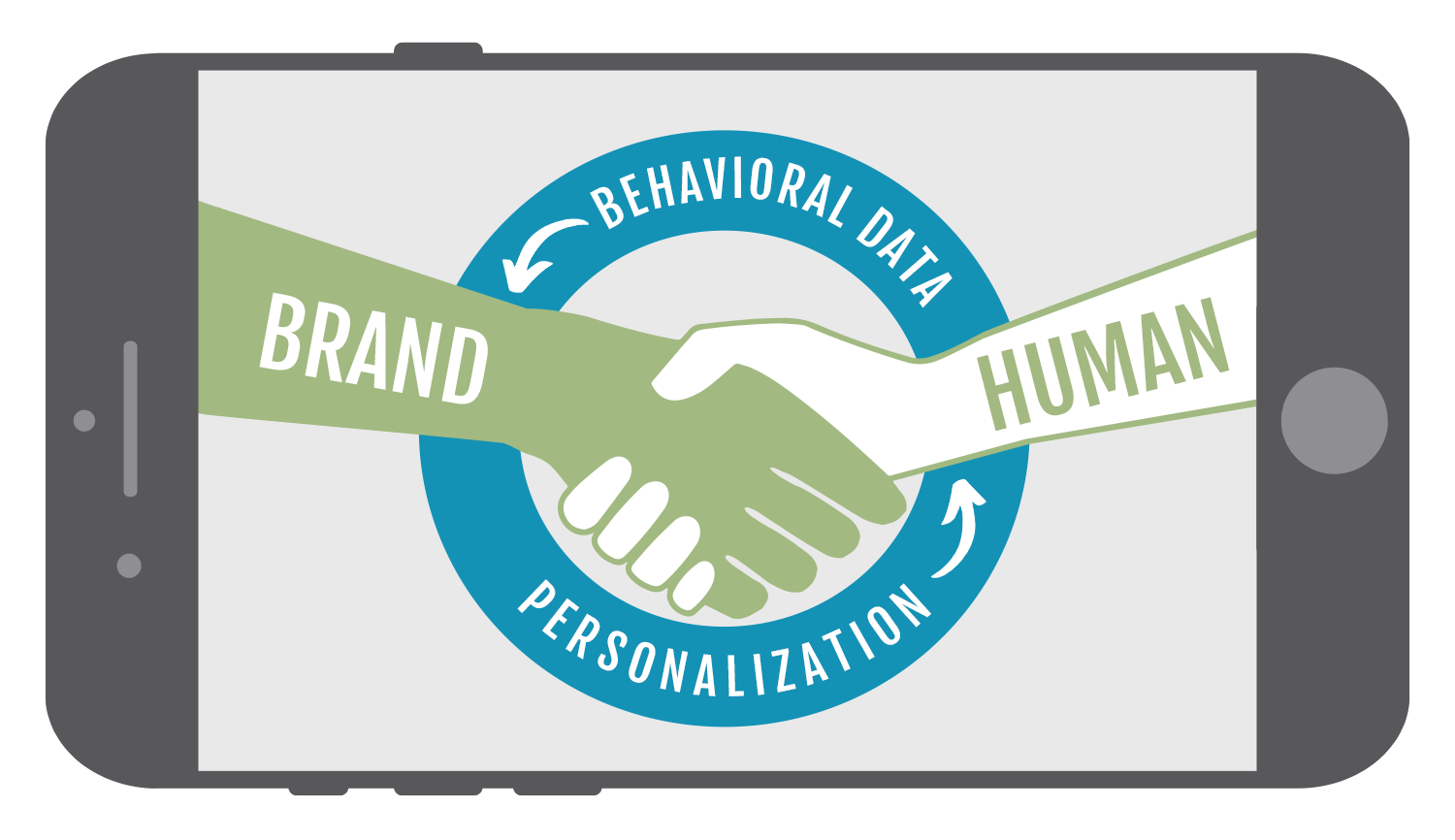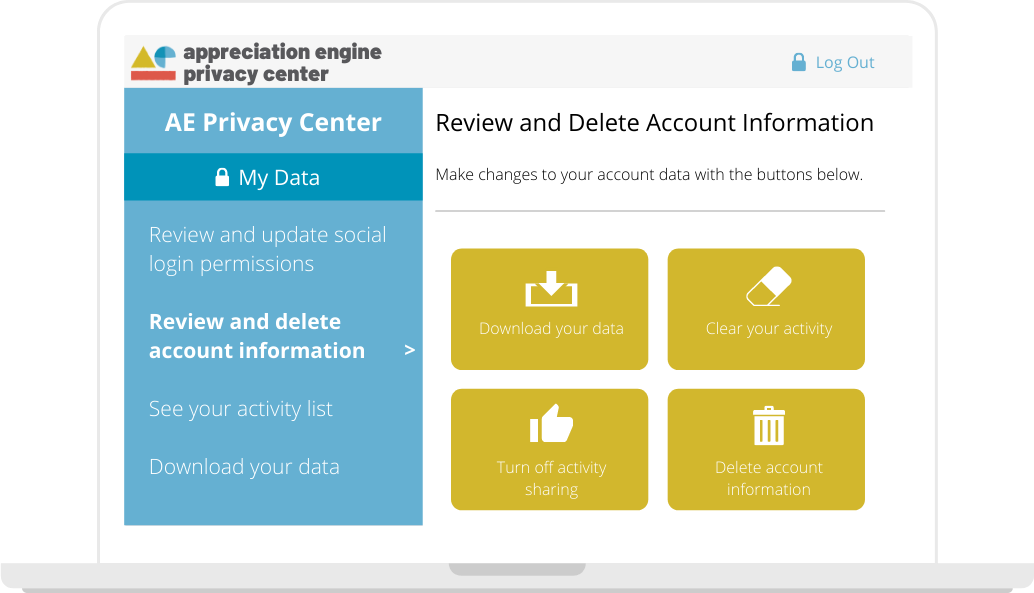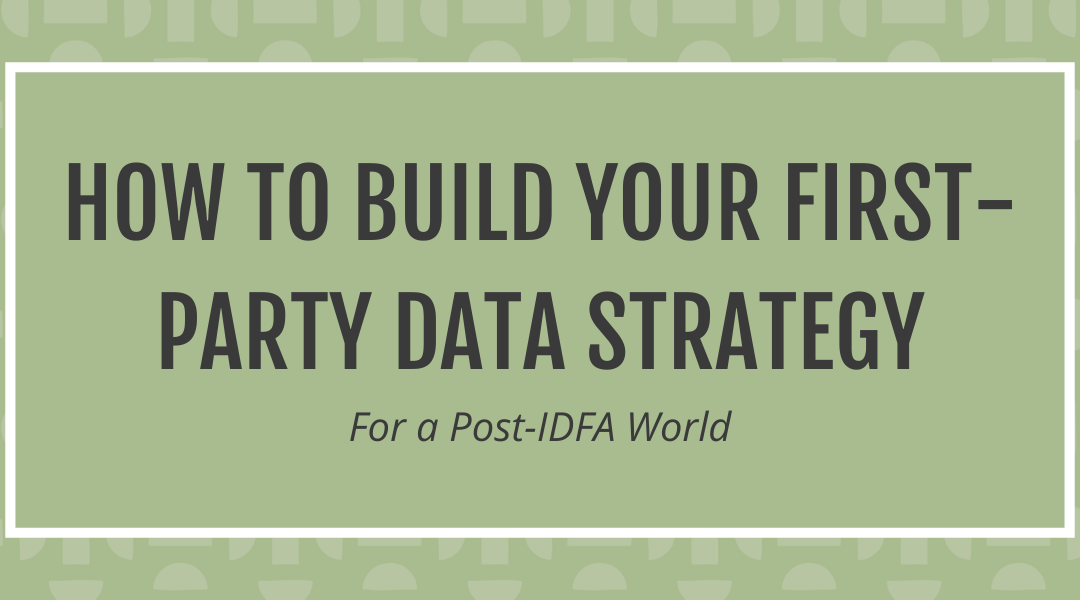Mobile users are more and more concerned about their privacy and the big tech giants are taking notice. With many privacy changes taking place and a cookieless future ahead of us, forward-thinking mobile game studios can use this time of flux to their advantage by creating a first-party data strategy. Recent studies by the Boston Consulting Group have found that brands using first-party data for key marketing functions achieved up to a 2.9X revenue uplift and a 1.5X increase in cost savings. Despite the clear benefits most mobile games companies haven’t harnessed the full power of first-party data.
What is First-Party Data?
First-party data is any data you’ve collected about your mobile games user and always data that is unique to your business. Amazon and Netflix both leverage the power of their first-party data to offer personalized recommendations and deliver dynamic ads based on behavior. These powerhouses of first-party data have always relied on gathering user information. First-party data is the most valuable data for advertisers as third-party data sources dry up and more data is poised to evaporate.
The Privacy Paradox
Data from FinancesOnline reveals that half of Americans are very concerned about their online privacy and 74% have limited their online activities due to privacy concerns.
At the same time website users want personalized and relevant content. Accenture found that 91% of consumers say they are more likely to shop with brands that provide offers and recommendations that are relevant. Redpoint Global reported that 70% of consumers say they will shop exclusively with brands that personally understand them.

This is the Privacy Paradox in effect. Mobile users want a rich mobile and web experience with personalized content and offers, but they’re not very comfortable sharing their data. So how do you deliver rich personalization while respecting users? Getting your users permission to access their first-party data in return for personalization is the fundamental way marketing is changing. We call this a First-Party Digital Handshake.
This new approach will build trust with your users and become the backbone of your first-party data strategy. So how do you start to build a first-party data strategy at your mobile games company? We’re here to help.
What is a First-Party Data Strategy?
First off let’s make it really clear what we’re talking about. A first-party data strategy is a plan of action that shows you:
- when and where you collect first-party data from your user,
- what value you deliver back to your user,
- and how your business KPIs improve.
Use this three bullet framework to create company-wide strategic goals. These goals will guide the collection of first-party data and also provide a framework to the investment of time and money to make this happen.
There is one key question you can use as a guidepost to help you wrestle with your strategic goals: “Have I made it easy for a mobile games user to see the benefits of sharing their data with us?” If you can answer this question clearly and concisely you’re more than half-way to mapping out your first-party data strategy.
The 5 Steps to Build Your First-Party Data Strategy
We’ve worked in first-party data for over 12 years and know the exact steps that will help you make the most privacy-first and beneficial data decisions. So let’s get going:
- Investigate Your Existing Customer Data
- Review Your Marketing Tech (MarTech) Stack
- Analyze Your Current Marketing and Data Strategy
- Close Your Technology Gaps
- Acquire Consent from Your Customers to Collect Their Data
1. Investigate Your Existing Customer Data
Take a step-by-step approach to review all the mobile games user data you currently have. Before you understand where you’re going you need to know exactly what you have right now.
App Analytics – Review the last 6-12 months of your game app analytics to really understand the key indicators and monetization paths inside your app.
Advertising Data – Study your past advertising data and see what trends emerge from their performance.
Purchase Paths – Look at a cohort of users and model purchase paths using AI and machine learning. Perhaps the users who downloaded your app and completed the first 5 levels within 10 days went on to spend at least $10 on in-game purchases. Mine your first-party purchase data and find the paths that lead to the best likelihood of conversion.
User Data Audit – Take a look at your existing user data and see what sort of first-party data coverage you already have. Do you have any useful identifiers like phone number or email address? What’s the percentage of these identifiers?
User Data Analysis – Put your customer data through a segmentation analysis and understand your RFM (Reach, Frequency, and Monetary value). You’ll be able to answer questions like who has the potential to become a VIP customer and which of my game users are most likely to respond to engagement campaigns.
2. Review Your Existing MarTech Stack
Now that you know what kind of data you have, it’s time to review your marketing technology stack.
Technology Investigation – How many technology tools does your game studio use? With over 7,000 MarTech providers there’s a huge range of services available and it’s likely you’re using more than you think. If you suspect you only use 10 tools you might do some investigation and find your team uses over 30.
Brand Day – Once you’ve uncovered all your MarTech pieces it’s time to bring everyone together. Bring your agencies, your partners and your technology champions along with all your marketers and mobile growth team. Get everyone to share their top tool, why they love it and the value it brings to your data strategy. You’ll uncover some real gems.
PII & Security Audit – You’ve got your tools and know which ones are delivering real value so now you need to think about the security of your customer data. Where is it being stored? Who has access to it? Are there any manual processes taking place that means PII is being stored on a team members computer?
Legal Review – Now it’s a good time to sit down with your legal counsel and talk about the insights, tools and PII you’ve uncovered. Bring to them a list of questions you have about how PII should be handled and stored.
3. Analyze Your Current Marketing & Data Strategy
Since you understand the tools and data it’s time to step back and think about your mobile game marketing and data strategy. Your shiny MarTech stack is not a strategy – it’s a tool to help you do your job. So what job needs doing?
Strategy Team – A coordinated plan separates the winners and the losers in first-party data. To be effective you need to have a first-party data strategy where everyone in your company is aligned. Your CFO is paying for your MarTech stack, your CTO is implementing and managing your MarTech stack and your CMO is using your MarTech stack. Key leaders across your business need to point in the right direction and execute against your strategy. It’s hard to get time with all these folks but it’s critical they all get in a Zoom room together and define your customer experience goals and align them to business objectives.
Devise Customer Experience Goals – Think about your mobile game and your desired users. How are you going to reach these users and what are your key goals? If your goal is to drive loyalty and retain your most valuable users your first step would be to invest in your loyalty program and make it your primary first-party data source. This loyalty program would offer discounts, in-game redeemable points and personalized offers to increase engagement with your mobile games. Take a look at your current marketing and advertising tactics and see where they match your goal, and where they’re missing the mark. Identify what processes are working and what you need to do differently. Once you know what needs to change you can decide on the technology you need to get the job done.
4. Close Your Technology Gaps
Now that you know what you have, what you use and your strategy it’s time to find new tools to deliver.
Streamline your MarTech Stack – You have your MarTech foundation, but what are the cracks and holes you’ve identified and how are you going to fix them? Do you need a first-party data partner to help you collect consent? Do you need a consolidated first-party data source? Do you need a better email provider since you’re betting heavily on email personalization? Identify what technology is being underutilized and where you have capability gaps. And rather than ripping things out, which takes so much time and money, would it make sense to build on top?
Your First-Party Data Source – One truth to rule them all. Identifying which platform will hold your single source of truth for your first-party data is critical to your strategy. Imagine the worst case scenario where teams in your business are using various data sources and your mobile games user is being overwhelmed with contradictory messaging. That’s a marketing nightmare and you’ll lose users. Stop this from happening by deciding which single system is going to consume all your data signals and be your One Truth to Rule Them All.

A single system that collects all your data in one place like Appreciation Engine is going to be your One Truth to Rule Them All.
Flexible Platforms – Instead of being locked into a single provider who only allows you to access their tools make sure you’re using a provider who places nicely with all your other technology. You no longer have to make do and if you find yourself thinking, well, it will just have to do, you don’t. Find a software partner who can support you to deliver your strategic goals.
Your Partners – From agency to analytics you need to partner with companies that are going to propel you forward. You want to be working with a true partner who is forward thinking and puts on their “privacy-first” cap when you’re developing a strategy. With unprecedented privacy-driven changes coming you may be scouting out new partners. To test their mettle some great questions to ask are: How are you preparing for the cookieless world? How do I build better relationships with my customers? How can you help me develop a first-party data strategy? Find a partner whose second nature it is to lean in and help you deliver.
5. Collecting and Managing First-Party Data
Now you’re ready to start executing! The lynchpin for your whole first-party data strategy is collecting consent from your mobile games users. You have a responsibility to build 1-1 relationships with your users that will deliver value to each side.
Presenting Context And Value – Telling your mobile game user why you want them to log in or create a loyalty account is vital. It’s highly unlikely a user will just hand over their personal data anymore – just look at the decrease in IDFA opt-ins from 100% to between 4% and 38%. You need to give your mobile games user a reason to share their data with you – i.e. the First-Party Digital Handshake. The more open and transparent you can be the faster trust will grow and so will your first-party data.

The First-Party Digital Handshake
Single Sign On – Since you have a variety of games in your portfolio you’ll need a tool that supports single sign on for a streamlined end-user experience across all your games. There is nothing more annoying than being asked to log in over and over… Find a single sign on solution that works across all your portfolio.
Privacy Management – The “right to be forgotten” is a key part of the GDPR framework and the CCPA. It’s critical your end-user can see what data has been collected about them, where it’s stored. Your end user may also ask you to delete them and their data from your first-party data source. Make sure your technology partner offers user-focused privacy tools where the end user can manage their requests themselves. That’s one less privacy headache for you to worry about.

AE’s Privacy Center makes it easy for end users to manage their data privacy quickly and efficiently.
Data Governance – You need to make sure that your data is being managed properly with clear processes that ensure your data is accurate. Your first-party data needs to be secure to avoid data breaches but also easy to access by your marketing tools and your other tools like Singular and other mobile attribution providers.
Deliver Engaged Experiences – You’ll have a number of ways you can leverage first-party data for automation and personalization. Major brands are experimenting with first-party data to achieve up to a 2.9X revenue uplift. Use discrete audience targeting to develop key segments for personalized communication and understand the lifecycle of your user and their behavior across multiple channels. Take a look at our in-depth article: Your Shifted Mobile Game Marketing and Advertising Strategy For the New iOS14 World.
Scaling – As you come to grips with your first-party data and how powerful these insights can be to your mobile advertising you’ll want to make sure you’re working with tools and partners who can scale with you. It’s unlikely that all your competitors are going to be this forward thinking so build momentum and scale.
Crafting Your First-Party Data Strategy
By now you’ve realized this isn’t going to be easy. Building a direct relationship with your customers should be the backbone of your first-party data strategy. Depending on your mobile games company this will either be a massive shift, or it will involve improving your current first-party data strategy to think about a more integrated data approach. The good news is that hard work pays off and anything you do now won’t be wasted.
Privacy legislation is tightening all the time and in the next two years, the third-party data landscape will be very bare. So arm yourself with forward thinking partners and start mapping out your future. At AE we believe this blue-sky thinking can also be fun and empowering. This is the early days of first-party data and you have an opportunity to be a pioneer.
Remember to come back to your guidepost question when you get stuck: “Have I made it easy for a mobile games user to see the benefits of sharing their data with us?”
We’re here to support you
Reach out and chat to our first-party data experts if you need a sounding board:

